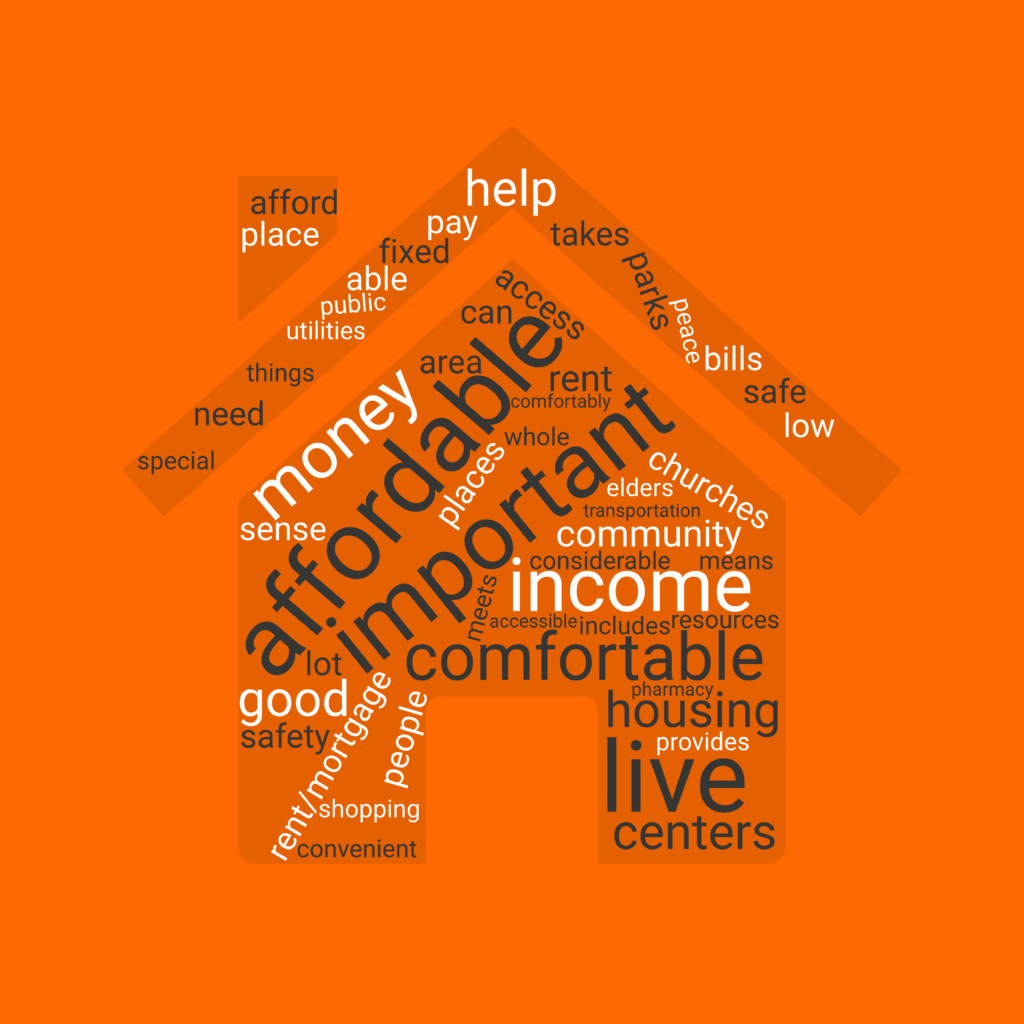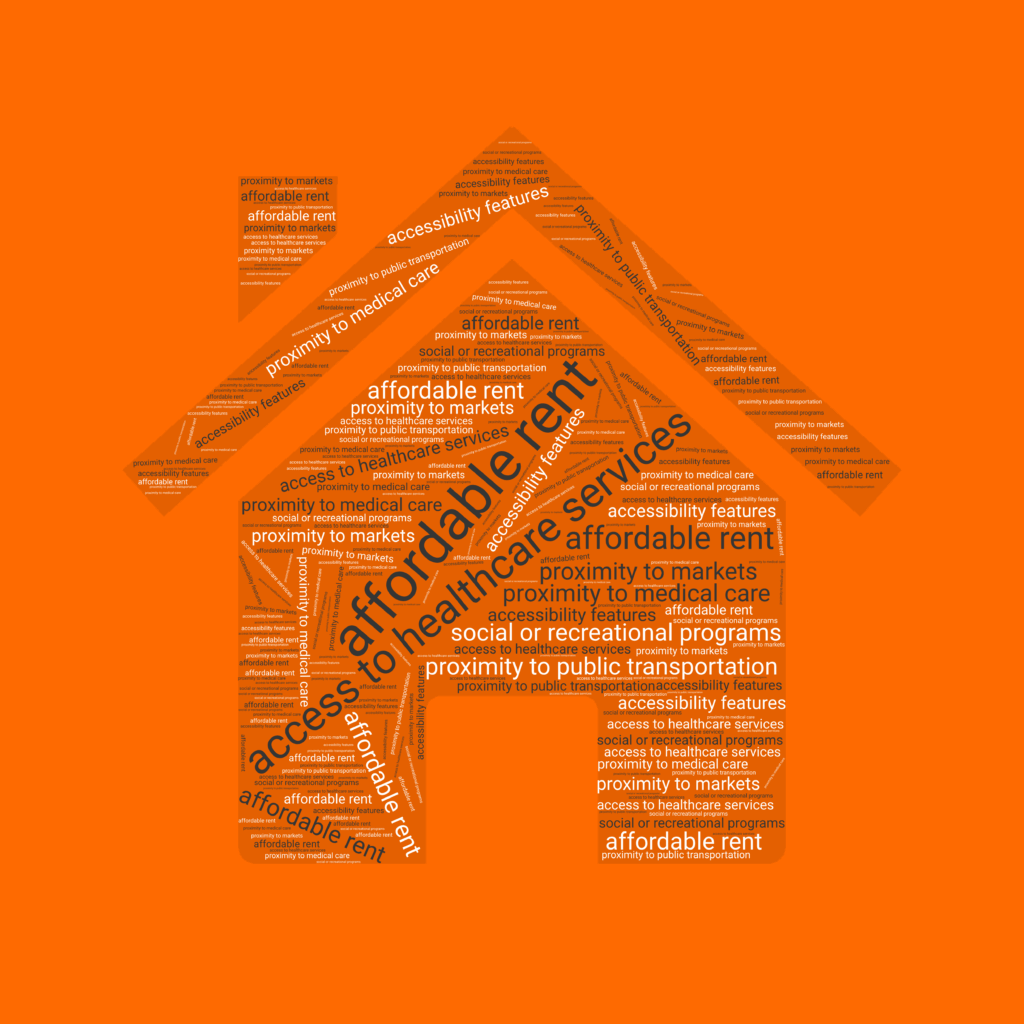As residents reflected on their hopes for the future, they shared thoughtful visions of what affordable senior housing should provide—highlighting the importance of safety, peace of mind, and dignity in later life. Their responses point to the need for housing that not only fits within a fixed income but also fosters a strong sense of community and access to essential resources.
What does “affordable senior housing” mean to you?

Residents described affordable senior housing as more than just low rent—it means having a safe, comfortable place to live, ideally where utilities are included, and where they can access the resources they need to live independently. Many emphasized that affordability must reflect their fixed incomes and offer them enough financial breathing room to enjoy life. One person put it simply: “A place where I can afford and live in peace with myself.” Others noted the importance of proximity to services like grocery stores, pharmacies, public transportation, and community centers.
What features or services would be most important in ideal senior housing?

Among the most frequently cited priorities:
- Affordable rent – Mentioned in 18 responses (64.29%)
- Proximity to public transportation – 13 responses (46.43%)
- Social or recreational programs – 12 responses (42.86%)
- Access to healthcare services – 15 responses (53.57%)
- Proximity to markets and medical care – 14 responses (50.00%)
- Accessibility features (e.g., ramps, elevators) – 10 responses (35.71%)
These responses underscore a holistic vision of housing—one that not only offers affordability but also supports health, mobility, and social connection.
Are there specific neighborhoods in Hartford where you think more senior housing should be built?
While many respondents were unsure (13 people, 46.43%) or chose not to answer (7 people, 25%), 8 respondents (28.57%) suggested that certain areas of Hartford would benefit from additional senior housing. Specific neighborhoods mentioned include:
- Parkville, Frog Hollow, and Asylum Hill
- South End
- Near hospitals and grocery stores
- General support for building in Hartford and surrounding towns like West Hartford and Manchester
These insights point to a clear desire to stay rooted in familiar neighborhoods—close to loved ones and services—while also highlighting gaps in current housing availability across the city.